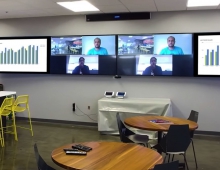
Hackers Target Banks in the Middle East
In the first week of May 2016, security research firm FireEye identified a wave of emails containing malicious attachments being sent to multiple banks in the Middle East region. The threat actors appear to be performing initial reconnaissance against would-be targets, and the attacks caught the researchers' attention since they were using unique scripts not commonly seen in crimeware campaigns.
The attackers sent multiple emails containing macro-enabled XLS files to employees working in the banking sector in the Middle East. The themes of the messages used in the attacks are related to IT Infrastructure such as a log of Server Status Report or a list of Cisco Iron Port Appliance details. In one case, the content of the email appeared to be a legitimate email conversation between several employees, even containing contact details of employees from several banks. This email was then forwarded to several people, with the malicious Excel file attached.
One of the interesting techniques observed in this attack was the display of additional content after the macro executed successfully. This was done for the purpose of social engineering – specifically, to convince the victim that enabling the macro did in fact result in the "unhiding" of additional spreadsheet data.
This malicious file is used to collect important information from the system, including the currently logged on user, the hostname, network configuration data, user and group accounts, local and domain administrator accounts, running processes, and other data, FireEye said.
Another interesting technique leveraged by this malware was the use of DNS queries as a data exfiltration channel. This was likely done because DNS is required for normal network operations. The DNS protocol is unlikely to be blocked (allowing free communications out of the network) and its use is unlikely to raise suspicion among network defenders.
The identity of the hackersis not known.
FireEye said Qatar National Bank was not one of the "several banks" in the Middle East where researchers had found the malware.
This attack also demonstrates that macro malware is effective even today. FireEye says that users can protect themselves from such attacks by disabling Office macros in their settings and also by being more vigilant when enabling macros (especially when prompted) in documents, even if such documents are from seemingly trusted sources.





















